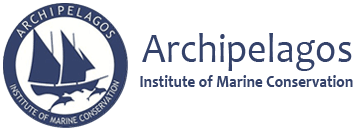Seagrass plays a vital role in the health of coastal ecosystems all across the world. It is useful in sediment stabilization and carbon storage, and it supports a very diverse set of organisms. 
Seagrasses are in severe decline for many suspected causes, most of which are human-related. The decline in these beds could have a large impact on communities that rely on invertebrate populations for commercial use, like many of the communities in Greece. To better understand human impact on the seagrass and invertebrate populations, a team of volunteers at Archipelagos are assessing multiple bays of varying marine traffic levels on the island of Lipsi for their seagrass cover and invertebrate richness.
Lipsi is a very small island of about 800 residents and it is heavily reliant on fishing and tourism. The bays in tourist season are often bustling with sailboats, yachts, catamarans, and of course, fishermen. Since the marine traffic is so influenced by the time of the year, this survey will be done at three different times of the year. An off-season survey has been completed and another will be completed in the spring when tourism is picking back up, and again in the summer when tourism is at its highest.
To measure marine traffic of each bay, a visual survey is conducted at three busy times of the day, during which pedestrian and boat presence is recorded. 
We hypothesize that in high traffic areas, both seagrass health and invertebrate richness will decrease, and that these will increase in low traffic areas. The data collected from these surveys can provide insight into the key role that seagrass plays in coastal ecosystems of the Eastern Aegean Sea, as well as those around the globe.
Amy Whelchel, B.S. Biology, University of Oklahoma, US

